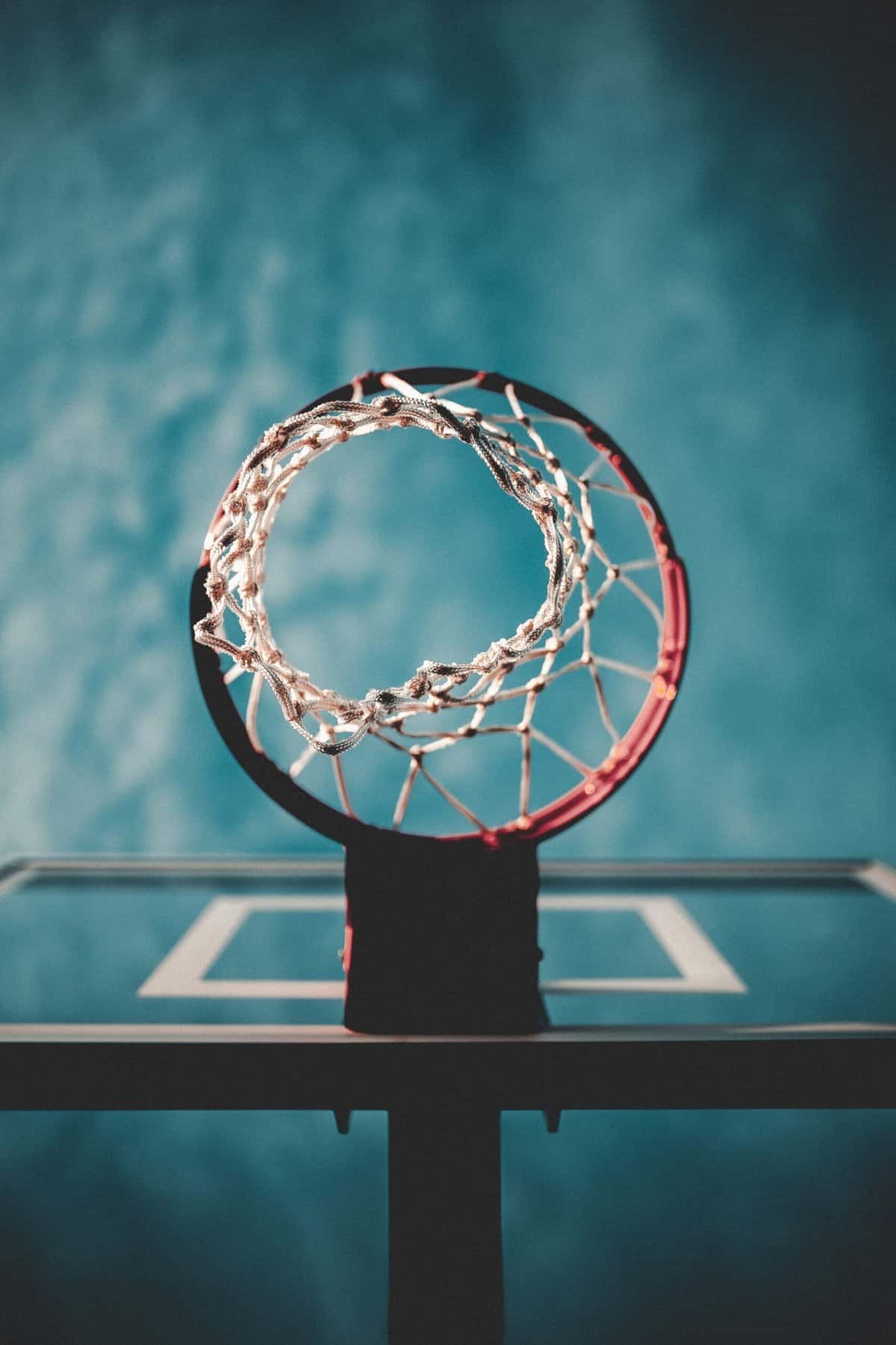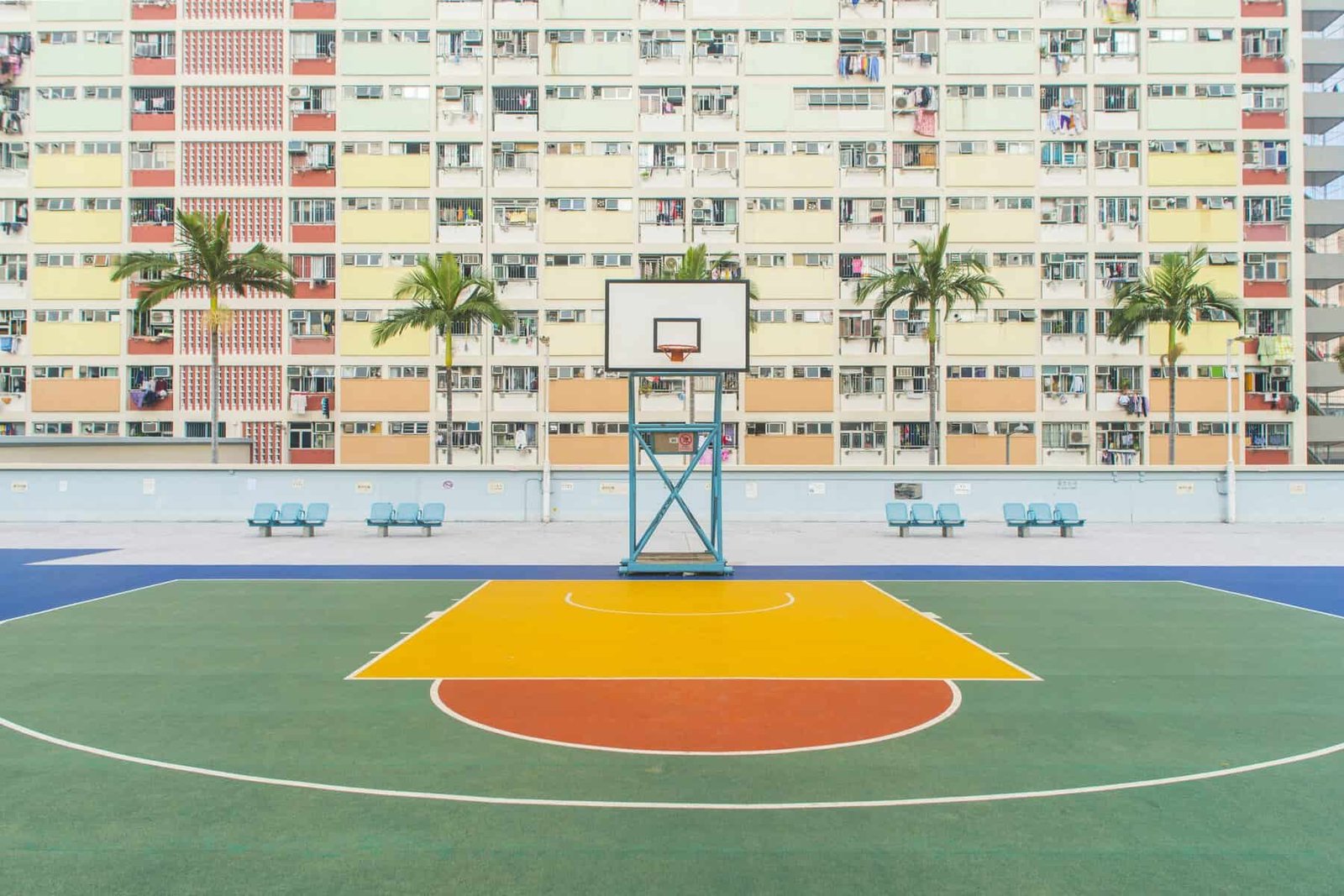As you step onto the basketball court, your anticipation builds. The crowd cheers, and the stakes are high. But have you ever wondered what the ideal backboard thickness is for professional play? The answer to this question holds the key to the game’s dynamics and the perfect shot. In this article, we will explore the importance of backboard thickness in professional basketball, considering factors such as rebound control, durability, and the impact it has on the players’ performance. So, let’s embark on this journey together and uncover the secrets behind the perfect backboard thickness for the ultimate basketball experience.
Importance of Backboard Thickness
The thickness of a basketball backboard is a critical factor that often goes unnoticed by many players and fans. However, it plays a significant role in the overall performance and durability of the backboard. Whether you’re shooting hoops in your backyard or competing at a professional level, understanding the importance of backboard thickness is essential. In this article, we will explore various aspects of backboard thickness and its impact on the game.
Enhances Durability
One of the primary benefits of a thicker backboard is its enhanced durability. Basketball is an intense sport that involves high-impact plays, including powerful dunks and aggressive rebounds. With a thicker backboard, the risk of cracks, breakage, or even shattering is significantly reduced. A sturdy backboard can withstand the force exerted by players and provide a long-lasting playing surface that can endure years of rigorous use.
Improves Rebound
Backboard thickness also plays a crucial role in improving rebound performance. When the ball hits a thicker backboard, it tends to have a more consistent and predictable response. The increased thickness helps maintain the ball’s energy upon impact, allowing it to bounce back with greater force and accuracy. This improved rebound can significantly enhance the overall gameplay experience and allow players to develop and showcase their skills more effectively.
Reduces Vibrations
Another advantage of a thicker backboard is its ability to reduce vibrations. When the ball hits a thin backboard, it can create vibrations that can affect the trajectory and accuracy of the shot. These vibrations can also be felt by the players, impacting their shooting technique and overall performance. With a thicker backboard, the vibrations are minimized, providing a more stable playing surface and allowing players to concentrate better on their shots.
Enhances Shooting Accuracy
Shooting accuracy is a crucial factor in basketball, and the backboard thickness can have a significant impact on it. Thicker backboards provide a larger rigid surface for players to aim at, making it easier to judge and adjust their shots accordingly. The increased stability offered by a thicker backboard allows for improved shot control, resulting in higher shooting percentages. This enhanced shooting accuracy not only benefits individual players but also contributes to a more competitive and exciting game.
Standards and Regulations
To maintain fairness and consistency across basketball games worldwide, various organizations have established standards and regulations regarding backboard thickness. These standards ensure that the equipment used in basketball competitions meets certain criteria and provides a level playing field for all the teams and players involved. Let’s take a look at the standards set by some prominent basketball organizations.
NBA Standards
The National Basketball Association (NBA) has specific regulations regarding backboard thickness. According to their guidelines, NBA backboards must have a minimum thickness of 2 inches. This ensures that the backboards used in professional basketball games are sturdy enough to withstand the intense physicality of the sport while providing reliable rebound and shooting performance.
NCAA Standards
In college basketball, the National Collegiate Athletic Association (NCAA) also sets standards for backboard thickness. NCAA regulations require the backboard to have a minimum thickness of 2 inches, similar to the NBA standards. These regulations reflect the NCAA’s commitment to maintaining a high level of play and ensuring safety for the players.
FIBA Standards
The International Basketball Federation (FIBA) governs basketball competitions at the international level, including the Olympic Games. According to FIBA regulations, backboards used in official competitions must have a minimum thickness of 10 millimeters, which is approximately 0.39 inches. While this thickness is slightly less than the NBA and NCAA standards, it still ensures sufficient durability and performance for professional play.
Variations in International Competitions
It’s worth noting that not all international basketball competitions strictly adhere to the FIBA standards. Some leagues or tournaments may have their own specific requirements for backboard thickness. These variations can be influenced by factors such as regional preferences, available resources, or specific league regulations. Therefore, it is important for athletes and coaches to familiarize themselves with the specific standards of the competition they participate in.

Factors Influencing Thickness
Several factors influence the thickness of basketball backboards. Understanding these factors can help players, coaches, and manufacturers make informed decisions about the appropriate thickness for a specific setting. Let’s explore the key factors that influence the thickness of backboards.
Material of the Backboard
The material used for the backboard is a significant determinant of its thickness. Different materials have varying structural properties and require specific thickness to achieve optimal performance. Common materials used for basketball backboards include tempered glass, acrylic, polycarbonate, and fiberglass. Each material has its advantages and disadvantages in terms of performance, durability, and price.
Tempered Glass: Tempered glass is often considered the gold standard for backboards due to its exceptional strength, visibility, and rebound response. In professional settings such as the NBA, tempered glass backboards are commonly used. Due to the inherent strength of tempered glass, thinner thicknesses, around 0.25 to 0.5 inches, can still provide adequate durability and performance.
Acrylic: Acrylic backboards are a popular choice for recreational and semi-professional basketball setups. Acrylic is lightweight and offers good visibility, making it suitable for indoor and outdoor use. To ensure sufficient rigidity, acrylic backboards typically range from 0.25 to 0.5 inches in thickness.
Polycarbonate: Polycarbonate backboards are highly durable and can withstand heavy use and harsh weather conditions. They are commonly found in outdoor recreational settings. Due to the toughness of polycarbonate, backboards with thicknesses ranging from 0.5 to 0.75 inches are commonly used.
Fiberglass: Fiberglass backboards offer a balance between durability and cost-effectiveness. They are commonly found in community centers and school gyms. Thicker fiberglass backboards, ranging from 0.75 to 1 inch, ensure better performance and longevity.
Supporting Structure
The supporting structure and mounting mechanism of the backboard also influence its thickness requirements. The backboard needs to be securely attached to an appropriate support system to withstand the forces applied during play. The materials, design, and engineering standards of the supporting structure determine the distribution of stress and impact on the backboard. A robust supporting structure can help minimize the thickness needed for the backboard.
Overall Backboard Dimensions
The overall dimensions of the backboard, including its length and width, can also affect the required thickness. Larger backboards may require increased thickness to maintain structural integrity and prevent excessive vibrations or flexing. Conversely, smaller backboards may be able to achieve the same level of performance and durability with slightly thinner thickness. Finding the right balance between size, weight, and thickness is crucial to achieve optimal performance.
Optimal Thickness for Different Materials
While there are general guidelines for backboard thickness based on the material used, determining the optimal thickness requires considering various factors such as intended use, level of play, and budget constraints. Let’s explore the optimal thickness for different materials commonly used in basketball backboards.
Tempered Glass
Tempered glass backboards used in professional play often have thicknesses ranging from 0.25 to 0.5 inches. This range provides sufficient durability and performance, while also maintaining excellent visibility for players and spectators. Thicker tempered glass backboards can be used for outdoor installations or when additional sturdiness is required.
Acrylic
For acrylic backboards, a thickness range of 0.25 to 0.5 inches is commonly recommended. This range strikes a balance between performance, affordability, and weight. Thicker acrylic backboards may be preferred for outdoor use, where additional durability is needed to withstand weather elements.
Polycarbonate
Polycarbonate backboards are known for their extreme durability. With a thickness range of 0.5 to 0.75 inches, polycarbonate backboards can withstand heavy use and tough weather conditions. The thicker the polycarbonate backboard, the better the performance and longevity.
Fiberglass
Fiberglass backboards typically have a thickness range of 0.75 to 1 inch. This material offers a good balance between durability, performance, and cost-effectiveness. Thicker fiberglass backboards are recommended for high-impact play or when durability is a top priority.

Case Studies: Backboard Thickness in Various Leagues
To gain a better understanding of how backboard thickness varies across different leagues, let’s explore a few case studies.
NBA
In the NBA, the official backboard thickness is a minimum of 2 inches. The use of tempered glass backboards ensures optimal performance and durability. This thickness has been carefully chosen to withstand the physicality of the game while providing consistent rebound and shooting accuracy for the players.
NCAA
The NCAA, which governs college basketball in the United States, also follows a minimum backboard thickness of 2 inches, similar to the NBA standards. This ensures a level playing field for college athletes and allows for seamless transitions between collegiate and professional play.
FIBA
The FIBA, responsible for international basketball competitions, sets a minimum backboard thickness of 10 millimeters, which is approximately 0.39 inches. While slightly thinner than the NBA and NCAA standards, this thickness is still sufficient to meet the performance and safety requirements of professional play.
EuroLeague
The EuroLeague, one of the most competitive basketball leagues in Europe, generally follows the FIBA standards for backboard thickness. However, variations can occur depending on specific league regulations or preferences of individual teams and venues.
Advantages of Thicker Backboards
Thicker backboards offer several advantages that contribute to an enhanced playing experience and higher level of play.
Increased Sturdiness
Thicker backboards are inherently sturdier and more resistant to cracks, breakage, or shattering. This enhanced durability ensures that the backboard can withstand powerful dunks, aggressive rebounds, and other high-impact plays without compromising its structural integrity.
Better Ball Response
Thicker backboards provide a more consistent and predictable response upon ball impact. The increased thickness helps maintain the energy of the ball, resulting in better rebound performance and more accurate shot trajectories. This allows players to rely on a more reliable and controllable bounce, improving the overall flow and precision of the game.
Higher Level of Play
Thicker backboards contribute to a higher level of play by providing a larger rigid surface for players to aim at. This increases the target area for shooters and allows for more precise shots. Additionally, improved rebound performance reduces the need for players to readjust their shots, promoting a faster-paced and more fluid game.

Disadvantages of Thicker Backboards
While thicker backboards offer numerous advantages, there are also some potential drawbacks to consider.
Weight and Portability
One of the primary disadvantages of thicker backboards is their increased weight. Thicker materials, such as tempered glass, can significantly add to the overall weight of the backboard. This can make it more challenging to install and transport, especially for outdoor or portable basketball systems. It is important to consider the intended use and available resources when selecting a backboard thickness to ensure practicality and ease of use.
Cost
Thicker backboards, especially those made with premium materials like tempered glass, tend to be more costly than their thinner counterparts. The increased thickness requires more material and often involves additional manufacturing processes, driving up the overall cost. It is essential to balance performance requirements with budget constraints when choosing a backboard thickness.
Impact of Thickness on Safety
Backboard thickness has a direct impact on the safety of players and can influence the risk of certain injuries.
Collision-related Injuries
Thicker backboards are generally safer when it comes to collision-related injuries. The increased thickness provides a more robust barrier between players and the support structure, reducing the risk of accidental contact with sharp edges or hard surfaces. Thicker backboards also have a better chance of absorbing the impact of collisions, potentially minimizing the risk of severe injuries.
Shattering or Breakage Risk
Thin backboards, especially those made with materials like acrylic or polycarbonate, may be more prone to shattering or breakage upon high-impact plays. A thicker backboard, such as those made with tempered glass, offers greater resistance to such incidents. This reduces the risk of shattered glass or sharp fragments being scattered on the court, ensuring a safer playing environment.

Considerations for Custom-built Backboards
When considering custom-built backboards, several factors should be taken into account to ensure the best possible outcome.
Intended Use
Understanding the specific requirements of the intended use is crucial when customizing a backboard. Determine whether the backboard will be used in professional settings, recreational play, or training facilities. Consider the level of play, the frequency of use, and the specific demands of the game when choosing the appropriate thickness.
Budget Constraints
Custom-built backboards provide an opportunity to tailor the thickness to meet specific needs. However, it’s important to consider budget constraints when making these decisions. Thicker materials and additional customization options often come at a higher cost. Strike a balance between desired performance and affordability to make the most practical choice for your situation.
Available Space
The available space is another significant consideration when customizing a backboard. Thicker backboards may require a more robust support structure, resulting in higher space requirements. Ensure that the available space can accommodate both the backboard and the necessary support system without compromising safety or obstructing the playing area.
Conclusion
In conclusion, the importance of backboard thickness in basketball cannot be overstated. Thicker backboards enhance durability, improve rebound performance, reduce vibrations, and enhance shooting accuracy. By following the standards and regulations set by organizations like the NBA, NCAA, and FIBA, players and teams can ensure fairness and consistency throughout the game.
The optimal backboard thickness varies based on the material used, such as tempered glass, acrylic, polycarbonate, or fiberglass. Each material offers unique advantages in terms of performance, durability, and cost-effectiveness. Understanding the advantages and disadvantages of thicker backboards, including considerations of weight, cost, and safety, can help players and coaches make informed decisions.
When customizing backboards, it is important to consider the specific requirements of the intended use, budget constraints, and available space. By striking a balance between performance and practicality, custom-built backboards can offer a tailored solution that meets the demands of a particular setup.
In the end, whether you’re a professional player, a recreational enthusiast, or a coach, understanding the importance of backboard thickness allows you to select the best equipment for your needs. A well-designed and appropriately thick backboard contributes to a safer, more enjoyable, and higher level of play.

